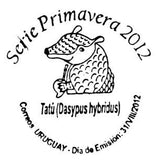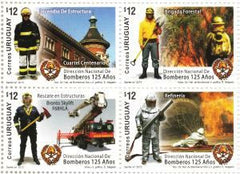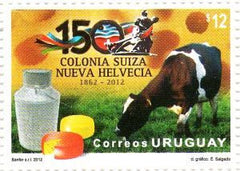- HomeInicio
-
CollectionsColecciones
- SheetletsHojas Filatélicas
- YearbooksAnuarios
- Booklet PaneCarnet Filatélico
- Collections 1997Colecciones 1997
- Collections 1998Colecciones 1998
- Collections 1999Colecciones 1999
- Collections 2000Colecciones 2000
- Collections 2001Colecciones 2001
- Collections 2002Colecciones 2002
- Collections 2003Colecciones 2003
- Collections 2004Colecciones 2004
- Collections 2005Colecciones 2005
- Collections 2006Colecciones 2006
- Collections 2007Colecciones 2007
- Collections 2008Colecciones 2008
- Collections 2009Colecciones 2009
- Collections 2010Colecciones 2010
- Collections 2011Colecciones 2011
- Collections 2012Colecciones 2012
- Collections 2013Colecciones 2013
- Collections 2014Colecciones 2014
- Collections 2015Colecciones 2015
- Collections 2016Colecciones 2016
- Collections 2017Colecciones 2017
- Collections 2018Colecciones 2018
- Collections 2019Colecciones 2019
- Collections 2020Colecciones 2020
- Collections 2021Colecciones 2021
- Collections 2022Colecciones 2022
- Collections 2023Colecciones 2023
- Collections 2024Colecciones 2024
- Collections 2025 Colecciones 2025
- CommemorativesConmemorativos
- CRI
- History of PhilatelyHistoria de la Filatelia
- About usNuestra Empresa
- FAQ
- Contact usContáctenos
Spring 2012 SetSerie Primavera 2012
The stamps of the Spring 2012 Set depict animals that belong to Uruguayan fauna.
Red-crested cardinal
Binomial name: Paroaria coronata
Total length: 17 cm. It is a bit smaller than the ovenbird, but much bigger than the Rufous-collared sparrow.
Features: Red head, crest and throat. Grey back. Balck tail and wings. White lower parts. Both male and female look similar but when they are young the head is brown instead of red.
Behavior: He is mostly seen in twos or small flocks. It has a loud and pleasant sing.
Habitat: countryside with trees and bushes; and farm lands.
Distribution: All around Uruguay, but mostly in the littoral. Also in the center and north of Argentina, center and south of Brazil, Paraguay and Bolivia. It doesn't migrate and lives most of the year in Uruguay where it makes it nest.
Vermilion flycatcher
Binomial name: Pyrocephalus rubinus
Total length: 14 cm.
Abundance: rare
Seasonality: summer (it emigrates during summer)
Habitat: open parks; gardens, it can be found all around Uruguay
Features: the species grow to about 7 in (18 cm) in length, and is strongly dimorphic; males are bright red, with dark brown plumage; and females have a peach-colored belly with a dark gray upperside.
Rufous-chested plover
Binomial name: Charadrius modestus.
Total length: 18 cm approx.
Features: Both female and male alike. The colors of the male are slightly stronger.
Behavior: Naive. Passive. Flies fast. Sometimes it can be seen in flocks of almost 100 specimens. During breeding season they can be seen in couples (Mid-spring - beginning of summer). After breeding season they move in smaller flocks.
Broad-snouted caiman
Binomial name: Caiman latirostris
Order: Crocodilia
Habitat: Tropical and subtropical regions of South America.
La Plata Dolphin
Binomial name: Pontoporia blainvillei
Common name: Franciscana
Habitat: It can be found in the coastal Atlantic waters of southeastern South America, including the "Río de la Plata" (La Plata River) estuary
Features: small in size with a greyish brown coloured body, with a lighter underside.
Status: Threatened, vulnerable species.
Yellow Manganga
Binomial name: Xylocopa augusti (male)
Seasonality: Mostly during summer because it is the time in which they pollinate flowers; in winter they can't be seen because they spend the winter inside their nests.
Features: Big in size, it scares with the sound of its wings while it flies; but it is harmless, because it is the male from the Xylocopa augusti species and all male bees don't have a stingers.
Rococo Toad
Binomial name: Rhinella schneideri
Features: very rough skin, covered with glands; two of which are bigger and located behind its eyes.
Habitat: all over South America
Breeding: oviparous by external fertilization that occurs inside the water. The most notable features of the breeding of this type of toad is that it makes sounds to attract a female.
Techncial details:
Issue date: 31/8/2012
Face value: $48 (4 stamps of $12 Uruguayan pesos each)
Graphic design: Gabriel Casas
Artist: Prof. Elbio Arismendi
Print run: 15.000 sets (60.000 stamps)
Printing house: Sanfer SRL
Sheet: 16 stamps each
Los sellos de la Serie primavera 2012, fueron ilustrados por el Prof. Elbio Arismendi. En ellos podemos apreciar animales integrantes de la fauna del Uruguay; el Cardenal rojo, el Churrinche, el Chorlito Pecho Canela, el Delfín del Plata o Franciscana, el Mangangá Amarillo y el Sapo Cururú.
Cardenal Rojo
Nombre científico: Paroaria coronata
Tamaño: 17 cm. Ave de tamaño algo menor que un Hornero, pero bastante mayor que un Chingolo.
Descripción: Cabeza, copete y garganta, rojo. Dorso gris. Cola y alas, negro. Partes inferiores, blanco. Macho y hembra similares. Pico claro. Pichones y juveniles con cabeza marrón, en vez de roja.
Comportamiento: Se lo encuentra en parejas o pequeñas bandadas. Canto fuerte y agradable.
Hábitat: Campos con árboles y arbustos; tierras cultivadas.
Distribución: Todo el Uruguay, pero es más abundante en el litoral. También en centro y norte de Argentina, centro y sur de Brasil, Paraguay y Bolivia. Residente todo el año en el Uruguay, en donde nidifica. No migra.
Churrinche
Nombre científico: Pyrocephalus rubinus
Largo total: 14 cm.
Abundancia: Poco común
Estacionalidad: verano, es un migrador estival
Ambiente: Parques abiertos Jardines, se lo puede encontrar en todo el Uruguay. Características: Macho, corona y zona ventral rojas; dorso negruzco. Hembra, dorso gris, zona ventral estriada.
Chorlito Pecho Canela
Nombre científico: Charadrius modestus. Otros nombres: Chorlito Pecho Castaño, Chorlito Chileno.
Tamaño: Mide unos 18 cm. Sexos iguales. Macho con colores ligeramente más intensos
Comportamiento: Confiado. Pasivo. Vuelo rápido. A veces en bandadas de hasta cien ejemplares. Durante la época reproductiva en parejas (Mediados de la primavera a comienzos del verano). Fuera de la época reproductiva suele vérselo en bandaditas.
Yacaré
Nombre científico: Caiman latirostris
Orden: Crocodylia
Nombre popular: Yacaré
Habitat: regiones tropicales y subtropicales de América del Sur
Delfín del Plata
Nombre científico: Pontoporia blainvillei
Nombre común: Franciscana
Habitat: estuario del Río de la Plata
Características: de pequeño tamaño y color marrón oscuro
Status: especie en riesgo
Manganga Amarillo
Nombre científico: Xylocopa augusti (macho)
Estacionalidad: verano, epoca en que recorre las flores para colectar su alimento; en invierno no se ven, pues están invernando en sus nidos.
Características: Es una abeja de gran tamaño y que asusta con su revoloteo por la vibración de sus alas, pero es inofensivo, pues este no es ni más ni menos que el macho de la especie Xylocopa augusti. Y todos los machos de todas las especies de abejas tienen la particularidad de no poseer aguijón para picar.
Sapo Cururú
Nombre científico: Rhinella schneideri
Cracterísticas: Tiene la piel muy áspera y llena de glándulas, dos de los cuales son más grandes y situadas detrás de los ojos.
Habitat: especie ampliamente distribuida en América del Sur.
Reproducción: ovípara por fecundación externa y se efectúa en el agua. Las características más importantes de la reproducción de esta especie es la de producir sonidos para atraer a una compañera.
Detalles Técnicos:
Fecha de emisión: 31/8/2012
Valor: $48 (compuesta de 4 sellos de $12 c/u pesos uruguayos)
Diseño Gráfico: Gabriel Casas
Dibujante: Prof. Elbio Arismendi
Tirada: 15.000 series (60.000 sellos)
Imprenta: Sanfer SRL
Plancha: 16 sellos c/u








